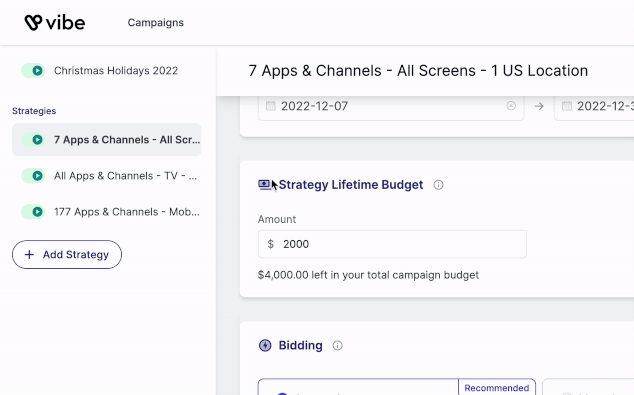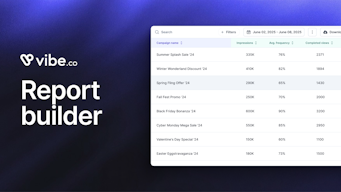How to build your 2023 advertising strategy
Flexibility is unquestionably the marketing North Star for 2023 as unpredictable market pressures and digital innovations continue to keep advertisers on their toes. But reader beware! Planning agile campaigns is not the same as not planning at all, and while you will have to be ready to pivot to meet evolving market needs, it will be crucial to include the right tools in your long-term strategy.
It might seem counterintuitive to associate flexibility with automation, but the two will need to work together in order for your team to increase their focus on what will really matter this year: frequent testing, omni-channel campaigns, adjusting to a profound paradigm shift in measurement and KPIs, rapidly metabolizing audience insights, and more. So if automated processes have felt too risky or too confusing for you to give them a try, now is the time to jump in. Here’s why.
Automate where you can, remain agile where you must
It may not feel like it anymore, but the beginning of 2022 was steeped in COVID-era market disruptions: a huge spike in e-commerce, supply chain disruptions, “flattening” of seasonal purchasing patterns, etc. 2023, on the other hand, will present marketers with a fresh set of challenges (yay?) that they will need to adapt to. Our advice to understanding this new landscape? Test everything, and test it often.
As digital providers work to overcome increasing privacy challenges, they are focusing on new ways to provide value to their customers by, for example, simplifying multivariate testing so marketers can finally move beyond A/B testing to incremental customization. For video marketing especially, running simultaneous strategies within specific campaigns will be essential to help brands break through the noise and engage audiences with hyper-customized creative. With Vibe.co, customers can easily segment campaign timelines, budgets, and targeting parameters into as many ad sets as they need to engage their audiences.

One way to ramp up testing is to use DCO for quick creative customization. DCO stands for dynamic creative optimization and rapidly builds multiple iterations of an ad using the same base creative, while tailoring parts of the ad based on audiences, context, and past performance. Getting comfortable with automation tools like this one across marketing initiatives will allow your team to both gather creative feedback more rapidly and increase demographic-specific customization.
While saving time on video, it will be important to turn that focus on insights from your multivariate campaigns - especially as consumer behaviors and global economic pressures remain unpredictable this early on.
Real-time reporting, one of the most exciting developments in Connected TV, means that brands can develop additional insights by monitoring impressions and engagement across targets and channels. This new type of measurement can help drive campaigns forward by better understanding how consumers are behaving within the ocean of activity between awareness and consideration, all the way to the point of purchase.
Some of the behavioral shifts sure to increase in 2023 are already in full effect, like a rapid increase in brick and mortar shopping and a drop in brand loyalty: according to first-party data company Dynata, “consumers have learned to be flexible in the face of recent stock shortages leading to more than 50% of Americans to feel less brand-loyal.” Meanwhile, “by 2026, only 20% of sales will be online so Warby Parker’s revelation that 60% of pre-pandemic transactions took place in-store—and that it continues to expand its store fleet—isn’t a big surprise.”
Another important tool to add to your automation arsenal is programmatic buying. Don’t worry, you’ll be in good company: according to Insider Intelligence, “in 2023, programmatic digital display advertising spending will increase 33% from the previous year and is expected to reach 142 billion.” Programmatic buying is a powerful tool to help streamline the ad-buying process and offer campaign measurement across CTV options. As audience churn fluctuates, with viewers cycling through different streaming platforms, you need to be able to reach them wherever they are. “2023 will be the year that will fuel programmatic development, delivering a new era of efficiency,” says Augustin Decré, regional managing director at Index Exchange.
2023, a new digital frontier
Here’s how industry experts are forecasting trends for the new year:
- 2023 overall ad spend projections expect to see 5.9% growth YoY, with CTV leading all other digital channels at +14.4%
- Every digital channel is expected to see ad spend growth in 2023, while spending on traditional media channels such as linear TV will decline YoY
- CTV spending is expected to top $20 billion this year
- Early US leaders like Facebook and Instagram are pulling back as companies move away from social commerce and double down on core advertising
- As acquisition costs continue to soar and changes in iOS privacy weaken the power of digital advertising, digitally native vertical brands (DNVBs like Bonobos, Glossier, Harry’s, etc.) are viewing their business model through a new lens
That’s a lot to consider! So here are the top three areas we recommend marketers focus on in order to keep up with the digital revolution: omni-channel campaigns, full funnel measurement (vs last touch attribution), and leveraging new digital tools to reduce waste and improve customer engagement.
1. OMNI-CHANNEL CAMPAIGNS
Marketers will have to be open to diversifying not only their marketing mix, but also their KPIs in order to remain top of mind across an increasingly complex customer journey. This means delivering high-quality media across premium and brand-safe environments, on all screen types. According to a recent Exchange Wire trend report, “Omni-channel capabilities with a focus on outcomes will remain the North Star for marketers in 2023, with the expansion of CTV forming a key component of successful growth strategies.”
How? By focusing on audiences first and channels second, ensuring a highly relevant advertising experience for viewers, alongside greater efficiency and precision for buyers. As exciting as targeting HGTV or Fox News programmatically may seem, it’s important to remember that the goal here is reaching specific audiences who may well watch these premium channels, but are probably also engaging with FAST (Free Ad Supported Television) channels like Pluto or Fubo. Leverage household IP targeting to find them wherever they are.
2. A MEASUREMENT REVOLUTION
Get ready to move away from last touch attribution metrics to a full funnel approach, tracking “attention” over impressions. The most important thread of ad effectiveness this year will relate to attention measurement given that “attention” as consumer behavior, is the new real estate. “Agencies and brands will begin a greater orientation around advertising formats and channels that garner the most consumer time and attention,” says Albert Thompson, Managing Director of Digital Innovation at Walton Isaacson. At the same time, results do need to remain measurable and quantifying “attention” can still be a challenge, so strategies that quantify the impact of targeted ads, like after-ad website visits and CTV-specific promo codes are guiding campaigns to ensure ad dollars are invested efficiently.
3. NEW DIGITAL TOOLS
A recent Ad Age study reflects the monumental growth of CTV measurement capabilities over the last year, reporting that 43% of marketers find that CTV/OTT spend increases are driven by the ability to achieve brand awareness and performance marketing goals. Why? Because it finally allows marketers to safely target specific audiences by layering in targeting data to create customized buys in an always-on environment. Doing so helps advertisers reach consumers directly while reducing waste and fraud.
CTV is at the heart of it all
At the end of the day, what will matter most in 2023 is marketers’ ability to meet audiences where they are and make a tangible, measurable impact on their behavior, which will require ad investment dollars to work harder. And guess what: CTV is where advertisers are seeing efficiency and outcomes! So while you can expect some pullback of ad spending across categories in a challenging economy, CTV advertising is widely predicted to grow in the year ahead. See for yourself.
According to the IAB,
- By the end of 2024, US advertisers will spend nearly $100 billion on linear TV and CTV combined. In 2024, CTV will account for nearly one-third of combined TV and CTV ad spending. Pre-pandemic, CTV accounted for under one-tenth of this spending in 2019.
- By 2023, more than half of all US internet users will be watching content via AVOD streaming services, and that figure will rise to 55.8% in 2026.
- In 2026, AVOD viewers will reach 174 million, with 68.6% of them consisting of OTT video services users.
- Free ad-supported streaming TV (FAST) has expanded significantly, making up 29.2% of the US population in 2022, up from 9.3% in 2018
- In fact, more than half (55%) of consumers use at least one free ad-supported streaming TV service (FAST)
The exponential growth of on-demand streaming during the pandemic has led to an absolute onslaught of premium inventory, now available at Google Ad prices (if purchased programmatically), and household IP targeting allows for the contextual, demographic, and interest targeting of engaged audiences.
Meanwhile, real-time reporting provides much needed insight for brands looking to refresh their campaigns or creative.
With CTV advertising as the lynchpin of a flexible omni-channel strategy, marketers can enter 2023 feeling confident and excited for what’s to come!


